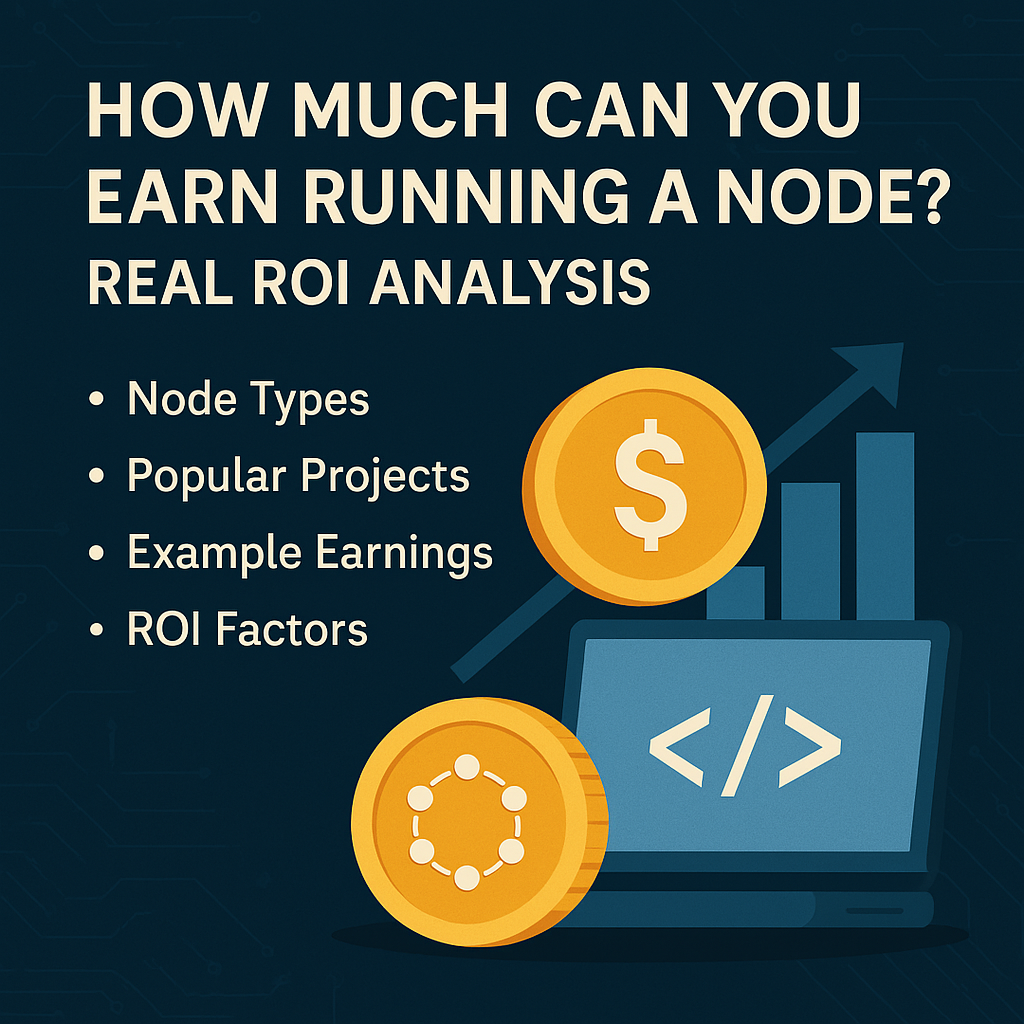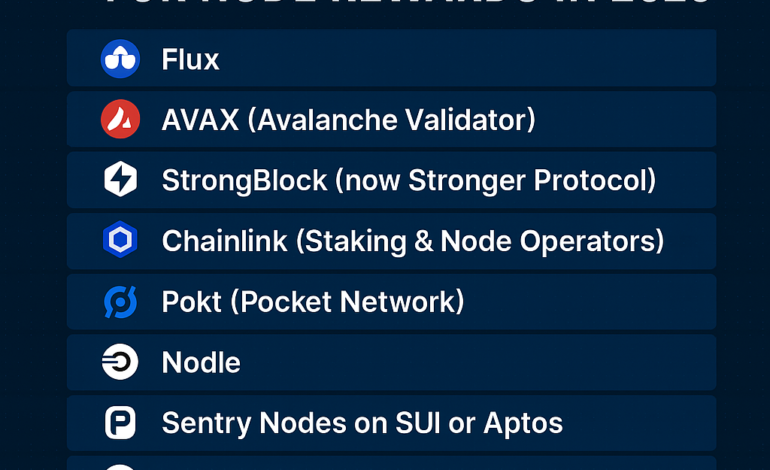As blockchain technology grows, more crypto enthusiasts are exploring node operations as a way to earn passive income. But the question most people ask is: how much can you actually earn running a node? In this article, we’ll break down node types, reward systems, and real-world ROI examples across popular blockchain networks in 2025.

What Is a Node and How Does It Generate Income?
A node is a device or server that participates in a blockchain network by storing data, verifying transactions, or helping run decentralized applications. In return for this contribution, node operators are rewarded with native tokens or other crypto assets.
There are several types of nodes:
- Full Nodes: Store the complete blockchain and validate all transactions
- Validator Nodes: Create and propose new blocks (used in Proof-of-Stake systems)
- Masternodes: Provide extra services (e.g., instant transactions, governance)
- Light Nodes / Micro Nodes: Perform partial tasks with lower requirements
Real ROI: How Much Can You Earn from Popular Node Projects?
Let’s break down some top node-based blockchain projects and their realistic ROI in 2025.
1. Flux Nodes
- Entry Cost: ~1000–12,500 FLUX depending on node type
- Annual ROI: ~10% to 20%
- Example: If FLUX is $0.50 and you run a Cumulus node (1000 FLUX), your rewards might total $100–$150/year
2. Avalanche Validator
- Stake Required: 2,000 AVAX
- Annual ROI: ~9%
- Example: At $40/AVAX, staking 2,000 AVAX = $80,000. Estimated annual rewards = $7,200 in AVAX
3. Chainlink Node
- Setup Cost: VPS + technical setup (~$50–$100/month)
- Rewards: Depends on traffic/data feeds
- Example: Profitable for enterprise users or high-demand oracles; small operators may earn $100–$500/month if optimized
4. StrongBlock (Legacy Data)
- Node Setup: ~10 STRONG tokens (legacy)
- Past ROI: ~20% monthly (early adopters)
- Current Model: Changed to Stronger protocol with different tokenomics
5. Pocket Network (POKT)
- Node Setup: 15,000+ POKT stake, reliable uptime
- Daily Earnings: Varies with API traffic
- Example: With moderate traffic, some nodes earn $10–$30/day (~$300–$900/month)
6. Presearch Node
- Cost: Free setup, just a VPS
- Rewards: ~8–20 PRE tokens/day
- Example: At $0.05/PRE, earning $0.40–$1/day = ~$12–$30/month per node
7. Helium Hotspot
- Device Cost: $250–$500
- Earnings: Varies by location and network activity
- Example: $10–$50/month depending on coverage
What Affects Node ROI?
Several factors impact your potential earnings:
- Token Price Volatility: If the token drops in value, so does your ROI
- Uptime & Performance: Downtime means fewer rewards
- Network Congestion: More competition = lower individual rewards
- Hardware/VPS Costs: Higher operating costs eat into profits
- Inflationary Tokenomics: Excessive supply can dilute rewards
Estimated ROI Range by Node Type (2025)
| Node Type | ROI Range (Annual) |
|---|---|
| Validator Node | 5% – 12% |
| Masternode | 8% – 15% |
| Cloud-based Node | 10% – 20% |
| Micro/Light Node | 2% – 5% |
| Experimental/Testnet | Variable |
🧩 Is It Worth It?
Running a node is most rewarding when:
- You believe in the long-term value of the token
- You’re technically comfortable managing servers or setups
- You want to support the decentralization of the network
- You factor in both token gains and network loyalty incentives
If you’re in it purely for profit, validator and infrastructure nodes (like Flux or AVAX) typically offer the most stable and scalable income. But micro nodes and experimental protocols can also be great low-cost entry points.
Final Thoughts
Earning through blockchain nodes can be a solid passive income stream in 2025—but success depends on choosing the right project, understanding the tech, and managing your costs. While some nodes offer high ROIs, others may take months just to break even.
Always analyze the reward structure, network health, and token economics before setting up a node.




